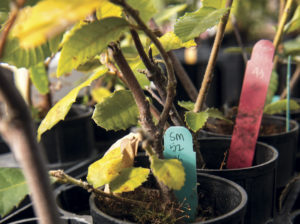A lot has happened in the battle against Sudden Oak Death (SOD) since Bay Nature reported on it in January. To date, the disease has been identified in black oak, coast live oak, tanbark oak, and Shreve oak trees in Marin, Monterey, Napa, San Mateo, Santa Clara, Santa Cruz, and Sonoma Counties and, most recently, in southwestern Oregon. The pathogen, Phytophthora ramorum, has now been found in the following host species (which carry the disease but are not known to be affected by it): California bay laurel, California buckeye, madrone, rhododendron, evergreen huckleberry, and viburnum. Scientists are working to keep SOD from becoming an epidemic like the Chestnut blight and Dutch elm disease that ravaged eastern forests in the last century, and politicians are showing support with new funding for research and management. Governor Gray Davis has approved $3.6 million in the 2001-2002 state budget, and Senator Boxer has secured $2.4 million in federal funds ($1.4 million from the Federal Emergency Management Agency and $1 million from the U.S. Forest Service). California officials have instituted a quarantine that regulates the movement of all known host materials within and out of the infested counties. While it is not yet known how the epidemic started, there is speculation that the worldwide nursery trade of rhododendrons may have been responsible for transporting the pathogen and introducing it here. As Douglas McCreary points out in the web newsletter Oaks and Folks, there’s more at stake in these efforts to avoid massive oak mortality than the appearance of the local landscape: many California coastal wildlife species that are dependent on oaks for food and shelter could face extinction; basic ecological processes (nutrient cycling, storage and release of water, moderation of soil temperatures) could be severely affected; and the presence of so many highly-combustible dead trees could greatly increase the risk of fire. To find out more about SOD, log on to www.suddenoakdeath.org.
Botany




